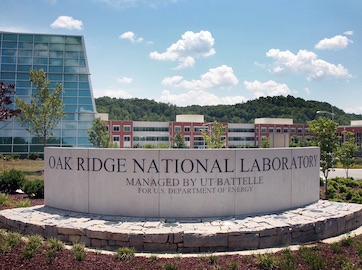Filter Results
Related Organization
- Biological and Environmental Systems Science Directorate (23)
- Computing and Computational Sciences Directorate (35)
- Energy Science and Technology Directorate
(217)
- Fusion and Fission Energy and Science Directorate (21)
- Isotope Science and Enrichment Directorate (6)
- National Security Sciences Directorate (17)
- Neutron Sciences Directorate (11)
- Physical Sciences Directorate (128)
- User Facilities (27)
- (-) Information Technology Services Directorate (2)
Researcher
- Ilias Belharouak
- Ali Abouimrane
- Gurneesh Jatana
- Jonathan Willocks
- Ruhul Amin
- Todd Toops
- Yeonshil Park
- Alexander I Wiechert
- Alexey Serov
- Benjamin Manard
- Charles F Weber
- Costas Tsouris
- David L Wood III
- Dhruba Deka
- Diana E Hun
- Georgios Polyzos
- Gina Accawi
- Haiying Chen
- Hongbin Sun
- James Szybist
- Jason Jarnagin
- Jaswinder Sharma
- Joanna Mcfarlane
- Junbin Choi
- Kevin Spakes
- Lilian V Swann
- Lu Yu
- Mark M Root
- Mark Provo II
- Marm Dixit
- Matt Vick
- Melanie Moses-DeBusk Debusk
- Philip Boudreaux
- Pradeep Ramuhalli
- Rob Root
- Sam Hollifield
- Singanallur Venkatakrishnan
- Sreshtha Sinha Majumdar
- Vandana Rallabandi
- William P Partridge Jr
- Xiang Lyu
- Yaocai Bai
- Zhijia Du

High-gradient magnetic filtration (HGMF) is a non-destructive separation technique that captures magnetic constituents from a matrix containing other non-magnetic species. One characteristic that actinide metals share across much of the group is that they are magnetic.

The ever-changing cellular communication landscape makes it difficult to identify, map, and localize commercial and private cellular base stations (PCBS).

We have been working to adapt background oriented schlieren (BOS) imaging to directly visualize building leakage, which is fast and easy.

The invention discloses methods of using a reducing agent for catalytic oxygen reduction from CO2 streams, enabling the treated CO2 streams to meet the pipeline specifications.

An electrochemical cell has been specifically designed to maximize CO2 release from the seawater while also not changing the pH of the seawater before returning to the sea.

The ORNL invention addresses the challenge of poor mechanical properties of dry processed electrodes, improves their electrical properties, while improving their electrochemical performance.

Lean-burn natural gas (NG) engines are a preferred choice for the hard-to-electrify sectors for higher efficiency and lower NOx emissions, but methane slip can be a challenge.

ORNL has developed a new hydrothermal synthesis route to generate high quality battery cathode precursors. The new route offers excellent compositional control, homogenous spherical morphologies, and an ammonia-free co-precipitation process.


